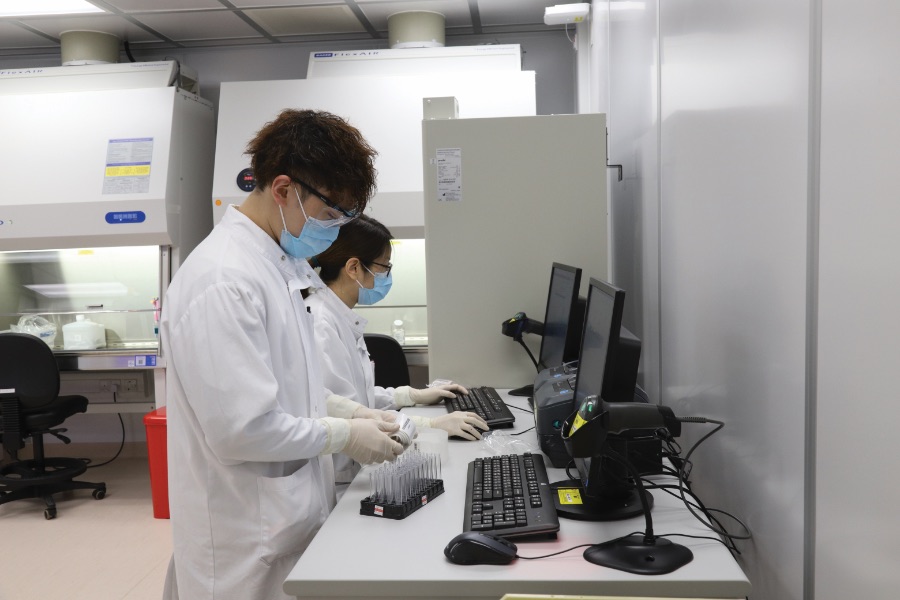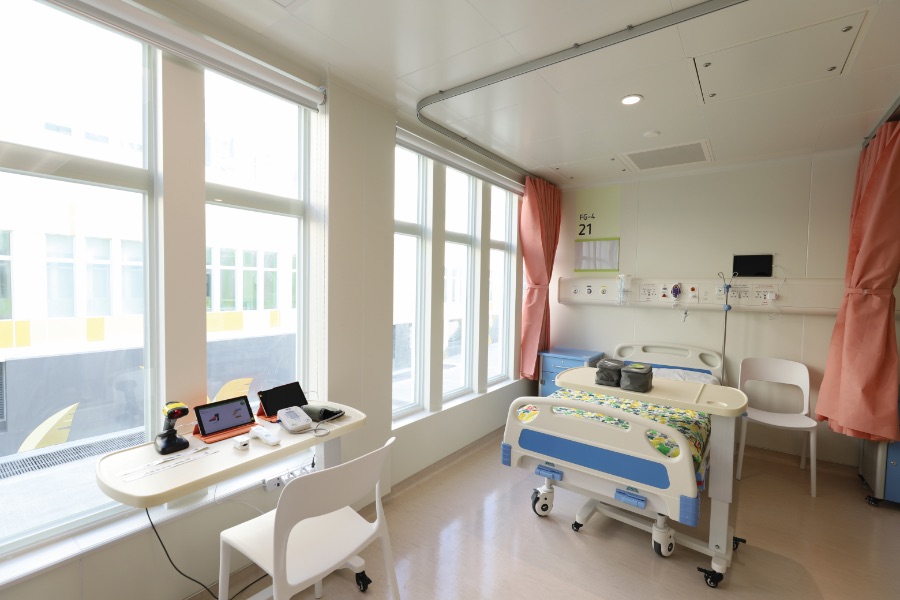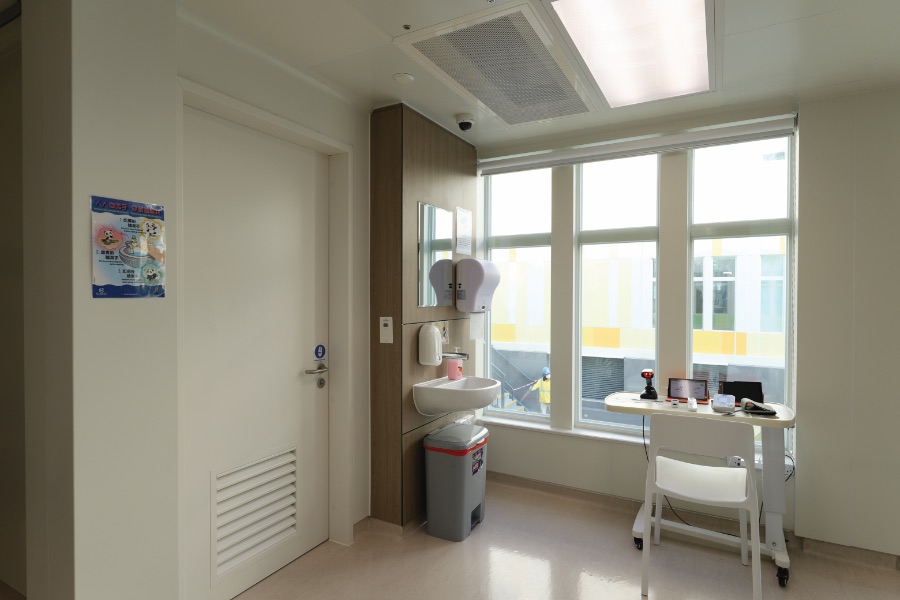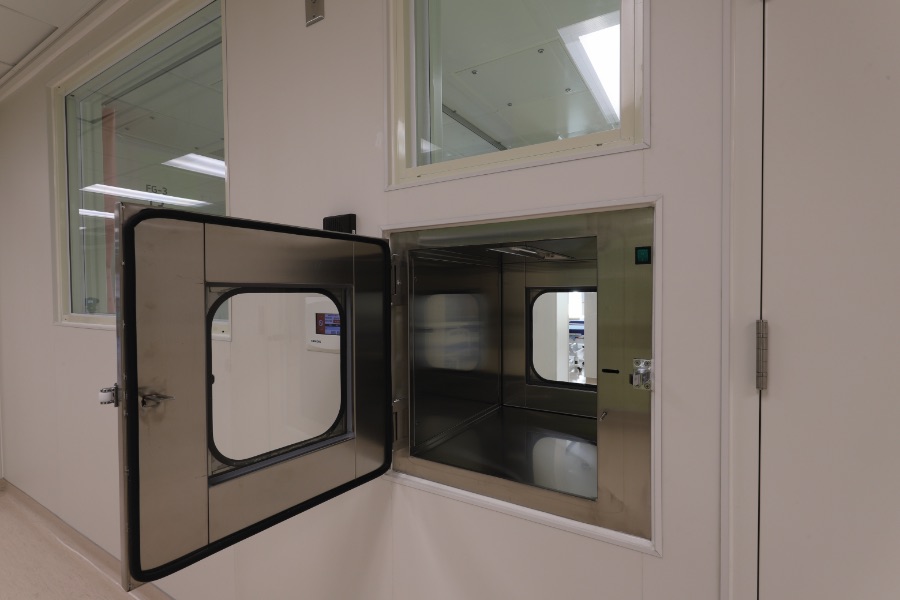Fact check about HKICC
Dr Michael Wong, Deputy Hospital Chief Executive of North Lantau Hospital, and Dr Jacky Chan, Associate Consultant of Medicine and Geriatrics Department at Princess Margaret Hospital, answer questions about the new North Lantau Hospital Hong Kong Infection Control Centre (HKICC) to let colleagues better understand the details of operation.

Q: What are the staffing and operational arrangements for the HKICC?
A: The laboratory and 48 isolation beds went into service in mid-to-late February. Around 100 clinical professionals and supporting staff from different clusters are working there on shift. The operational arrangements will be adjusted over time in accordance with the dynamics of the outbreak.
A: The laboratory and 48 isolation beds went into service in mid-to-late February. Around 100 clinical professionals and supporting staff from different clusters are working there on shift. The operational arrangements will be adjusted over time in accordance with the dynamics of the outbreak.

Q: What is the procedure after a patient is admitted to the HKICC?
A: All patients are directly sent to the wards through patient channels. COVID tests, X-rays, blood pressure tests, and blood taking are carried out at designated locations. Patients are then assigned to isolation beds for treatment. The HKICC provides treatment of intravenous drips, antiviral medications, and low-dose oxygen for patients. For patients with chronic diseases such as diabetes, HKICC can also provide insulin injections for them.
Q: Will the HKICC replace the Community Treatment Facility (CTF)?
A: When the pandemic eases or the CTF is returned to the AsiaWorld-Expo, the HKICC could care for CTF patients with mild symptoms and also receive stable cases referred by other public hospitals, gradually replacing second-tier isolation beds originally used in general wards. Such wards will then be able to resume normal services.
Q: What kind of patients is the HKICC receiving?
A: The HKICC receives COVID-19 patients aged 16 to 65 in mild to moderate clinical conditions. Disabled patients or those in a relatively serious condition will be placed in wards on the ground floor, while wards on upper floor will receive patients in milder conditions.
A: All patients are directly sent to the wards through patient channels. COVID tests, X-rays, blood pressure tests, and blood taking are carried out at designated locations. Patients are then assigned to isolation beds for treatment. The HKICC provides treatment of intravenous drips, antiviral medications, and low-dose oxygen for patients. For patients with chronic diseases such as diabetes, HKICC can also provide insulin injections for them.
Q: Will the HKICC replace the Community Treatment Facility (CTF)?
A: When the pandemic eases or the CTF is returned to the AsiaWorld-Expo, the HKICC could care for CTF patients with mild symptoms and also receive stable cases referred by other public hospitals, gradually replacing second-tier isolation beds originally used in general wards. Such wards will then be able to resume normal services.
Q: What kind of patients is the HKICC receiving?
A: The HKICC receives COVID-19 patients aged 16 to 65 in mild to moderate clinical conditions. Disabled patients or those in a relatively serious condition will be placed in wards on the ground floor, while wards on upper floor will receive patients in milder conditions.


Q: What special facilities are there in the wards?
A: The wards in the HKICC are designed to the standard of first-tier isolation wards. There are six isolation beds and a toilet in each cubicle of the ward, and patients can only stay in the cubicle. To reduce contact between patients and healthcare staff, patients can measure their daily vitality index themselves, including body temperature, blood pressure, and blood-oxygen levels, using an e-vital health station in their cubicles. The data will be automatically uploaded to the HKICC’s e-smart system for remote monitoring of patients’ conditions. Bedside tablets are available to monitor patients’ vital signs, there is also a connected delivery box inside each cubicle to receive supplies, such as meals, medicine from the outside of the cubicle.
A: The wards in the HKICC are designed to the standard of first-tier isolation wards. There are six isolation beds and a toilet in each cubicle of the ward, and patients can only stay in the cubicle. To reduce contact between patients and healthcare staff, patients can measure their daily vitality index themselves, including body temperature, blood pressure, and blood-oxygen levels, using an e-vital health station in their cubicles. The data will be automatically uploaded to the HKICC’s e-smart system for remote monitoring of patients’ conditions. Bedside tablets are available to monitor patients’ vital signs, there is also a connected delivery box inside each cubicle to receive supplies, such as meals, medicine from the outside of the cubicle.